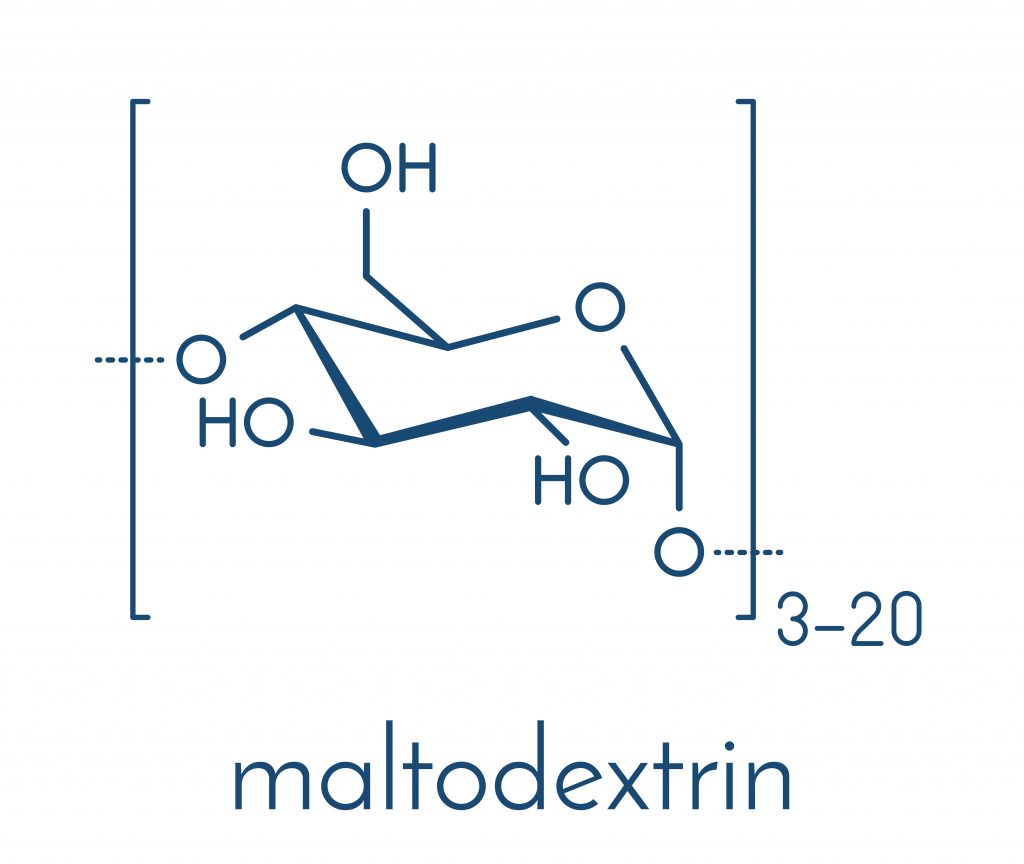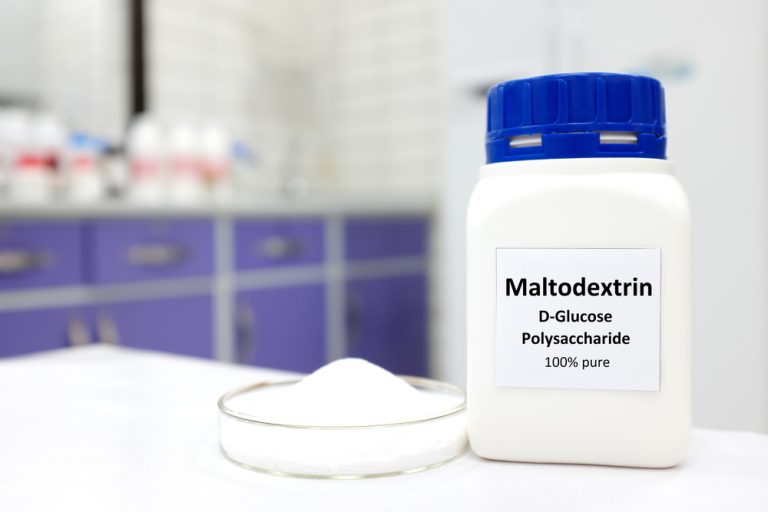How many of us, when checking the labels of the food products we buy, come across previously unknown names of chemical compounds? Science and technology are developing at the speed of light, not only providing us with a new portion of knowledge but also creating modified products, having more convenient properties and technological parameters in comparison with those contained in the original products, encountered every day. Maltodextrin is one of such modified products, which is formed by the hydrolysis of glucose starch.
What is maltodextrin?
Maltodextrin is a type of modified starch, which is formed by the partial hydrolysis of this compound. The Source of hydrolyzed may vary, since potato starch, corn starch, rice starch, and oat starch can be used to produce maltodextrin. However, in order to obtain maltodextrin from the above-mentioned types of starch, they must first undergo a gelatinization process. Gelatinization is a process in which cracking and swelling of grains in a high-temperature solution occur, and then - under the influence of acids used in the food industry or enzymes (like α-amylase) - undergo hydrolysis to maltodextrins.
The scale which indicates the amount of maltodextrin in food products is the glucose equivalent, the so-called DE (dextrose equivalent), which describes the degree of saccharification of starch. It is an indicator, which very precisely determines the percentage of reducing sugars in the dry substance of hydrolysate.
Glucose equivalent, i.e. DE, not only helps to determine the amount of maltodextrin in food products but also determines the value that a given starch hydrolysate must have in order to be considered maltodextrin (currently it must be below 20 DE). Furthermore, the DE value makes it possible to divide products with hydrolyzed starch into low-, medium- and high-sugar ones.
Due to its rheological and functional properties, maltodextrin is often used in the food industry as, among others neutral filler, gel-forming ingredient, emulsion and foam stabilizer, and coating material.

What is maltodextrin used for?
It is particularly appreciated for its ability to inhibit the formation of crystals at low temperatures, preventing the crystallization of sugars and increasing the viscosity and density of liquids. In addition, maltodextrin gives desirable sensory properties to products, in particular replacing fat and binders with prebiotic properties. Maltodextrins with a DE value of less than 5 are able to form thermo-reversible gels, which in their structure (consistency and spreadability), resemble edible fat, so they are often found in cheeses and margarine, which are characterized by good spreadability even when taken straight out of the refrigerator.
It should also be mentioned that starch hydrolysates used as a fat substitute are able to replace up to 85% of fat in a product! There is no denying, however, that for the consumer one of the most important, if not the most important, and therefore also the most interesting aspect of maltodextrin is its usage in the food industry. Due to its specific properties, this compound is mainly added to sauces, soups, and creams. In some cases, it is also used as an emulsifier, flavor and aroma enhancer, thickening agent, as well as an agent improving shelf life.
It is also worth adding that maltodextrin has its share in the dairy industry since we can also find it in ice-creams, margarine, dairy desserts, yogurts, and various kinds of different sauces, with the purpose of increasing their freezing rate and maintaining their correct consistency after thawing.
Where can we find maltodextrin?
You can find maltodextrin in foods such as:
- food concentrates of soups, sauces, spices
- pastry and bakery products
- mayonnaise
- nutritional and functional drinks (as a source of easily assimilable carbohydrates)
- carbonated drinks
- confectionery
- frozen creams, ice creams
- dietetic products
- baby foods (modified milk, infant formula, cereals)
Maltodextrin and celiac disease
Maltodextrin is primarily made from starch derived from gluten-free sources, which leads to the simple conclusion that it should therefore be a naturally gluten-free food product. However, it is sometimes made from wheat, which makes it important for people with celiac disease to pay attention to the source from which maltodextrin is made. Although it is not always explicitly stated, by default maltodextrin is considered a gluten-free product unless it is explicitly stated that it is made from wheat.






